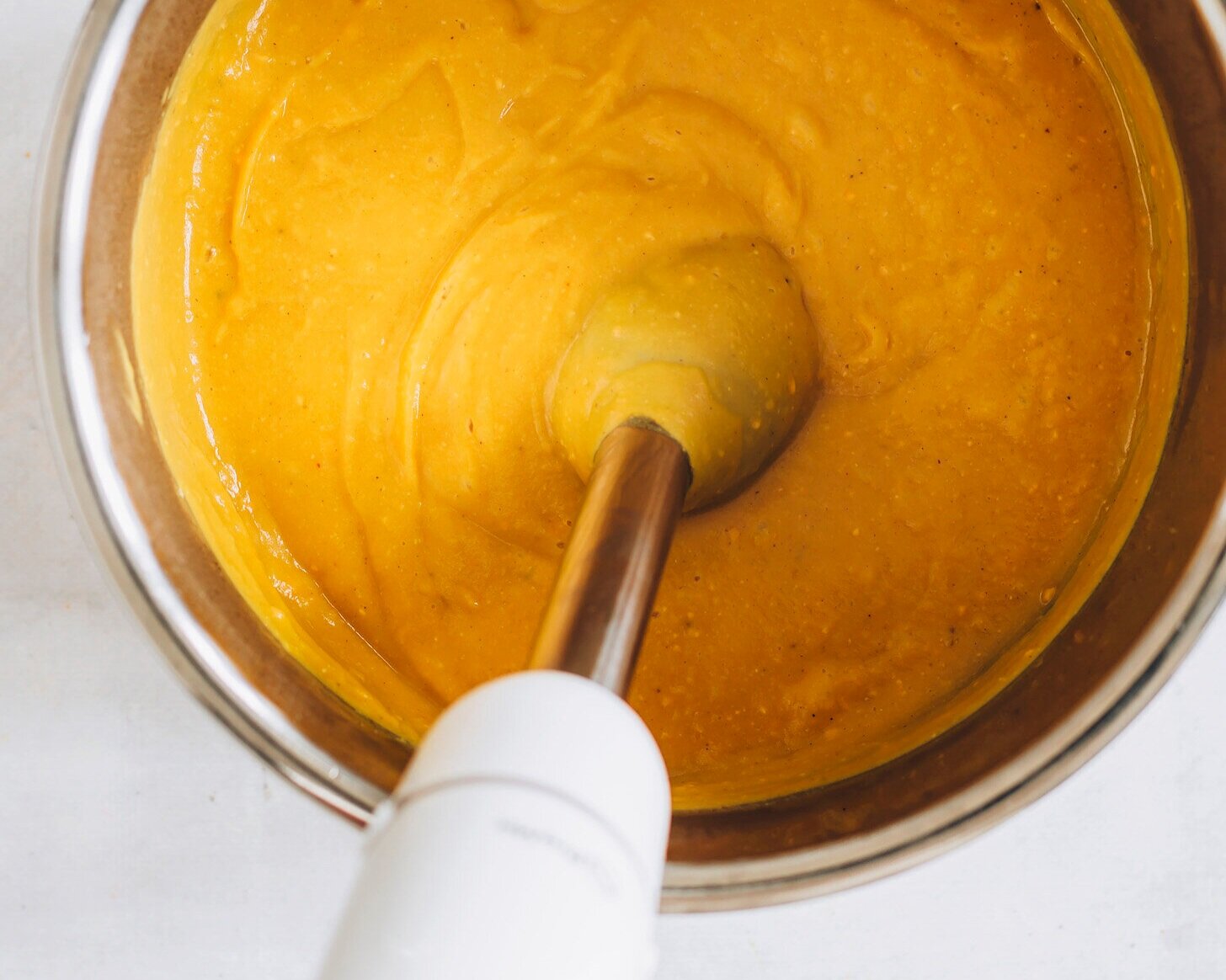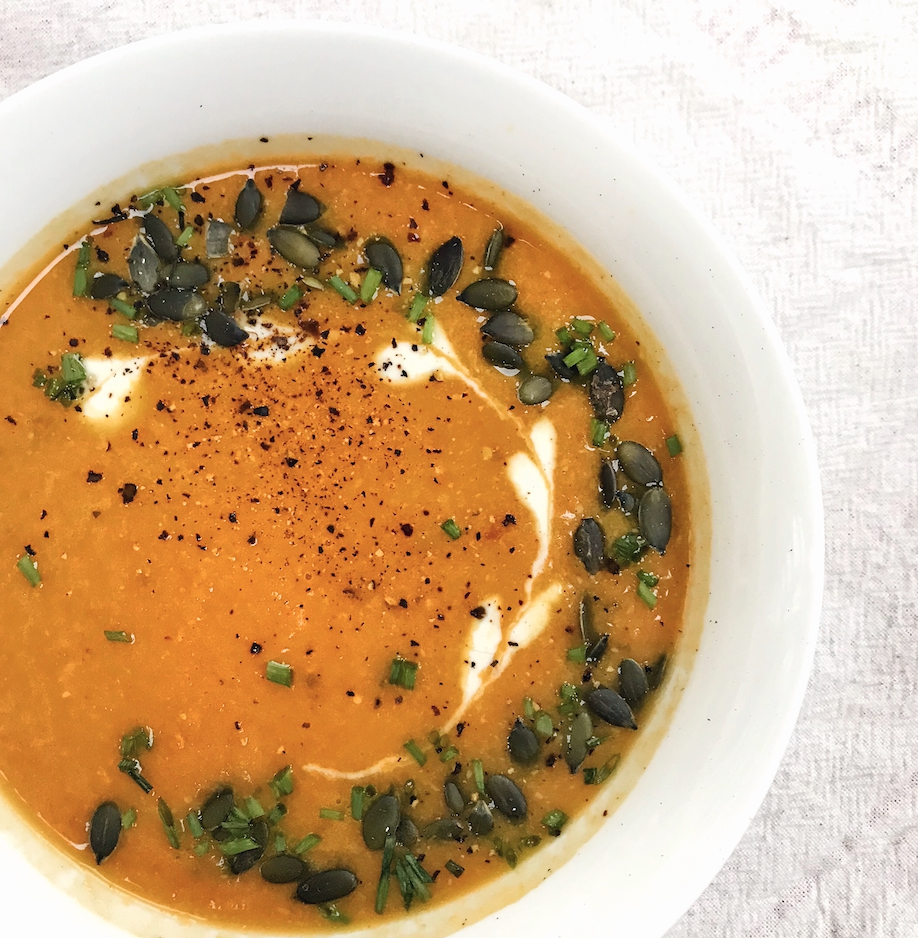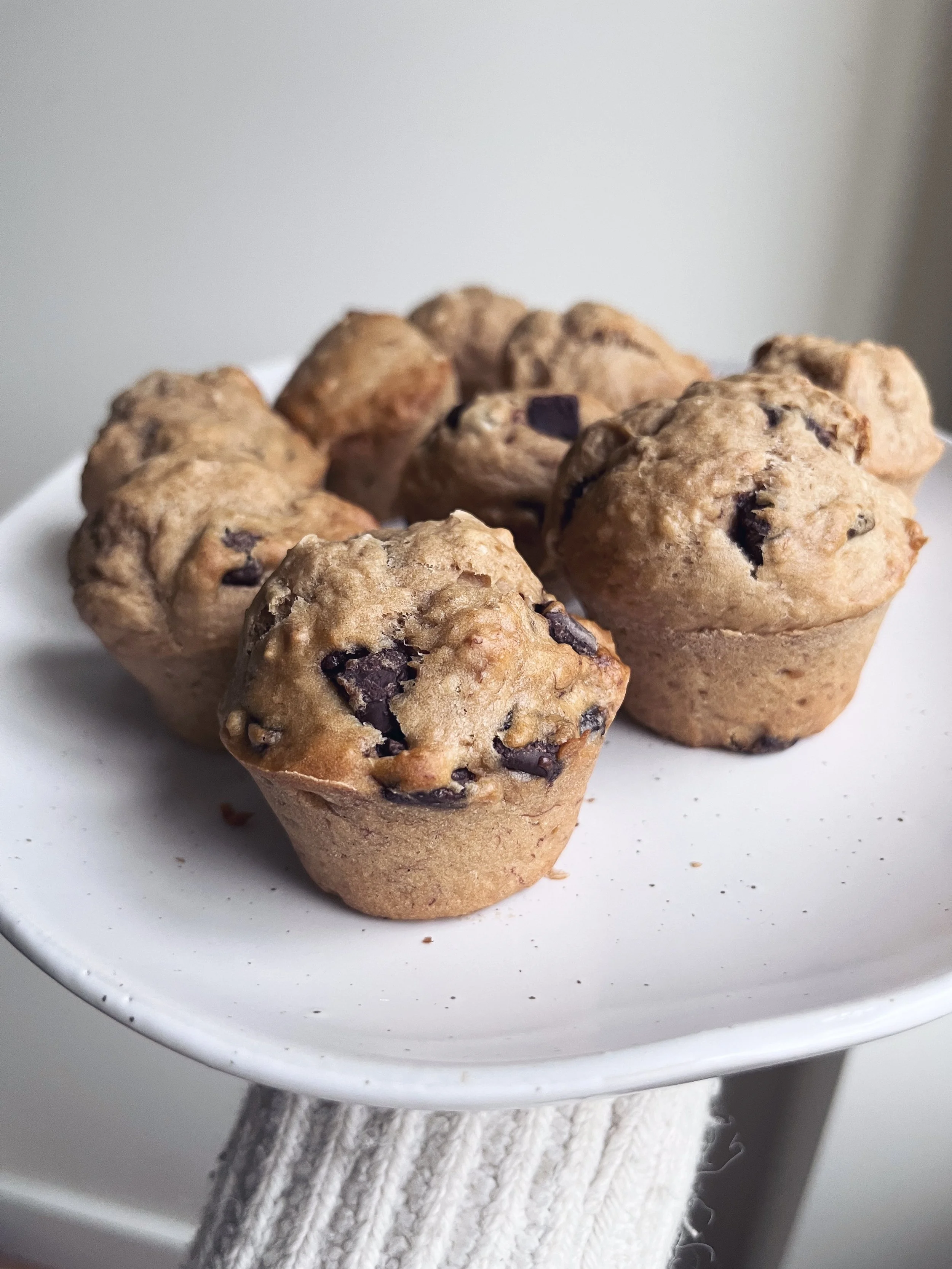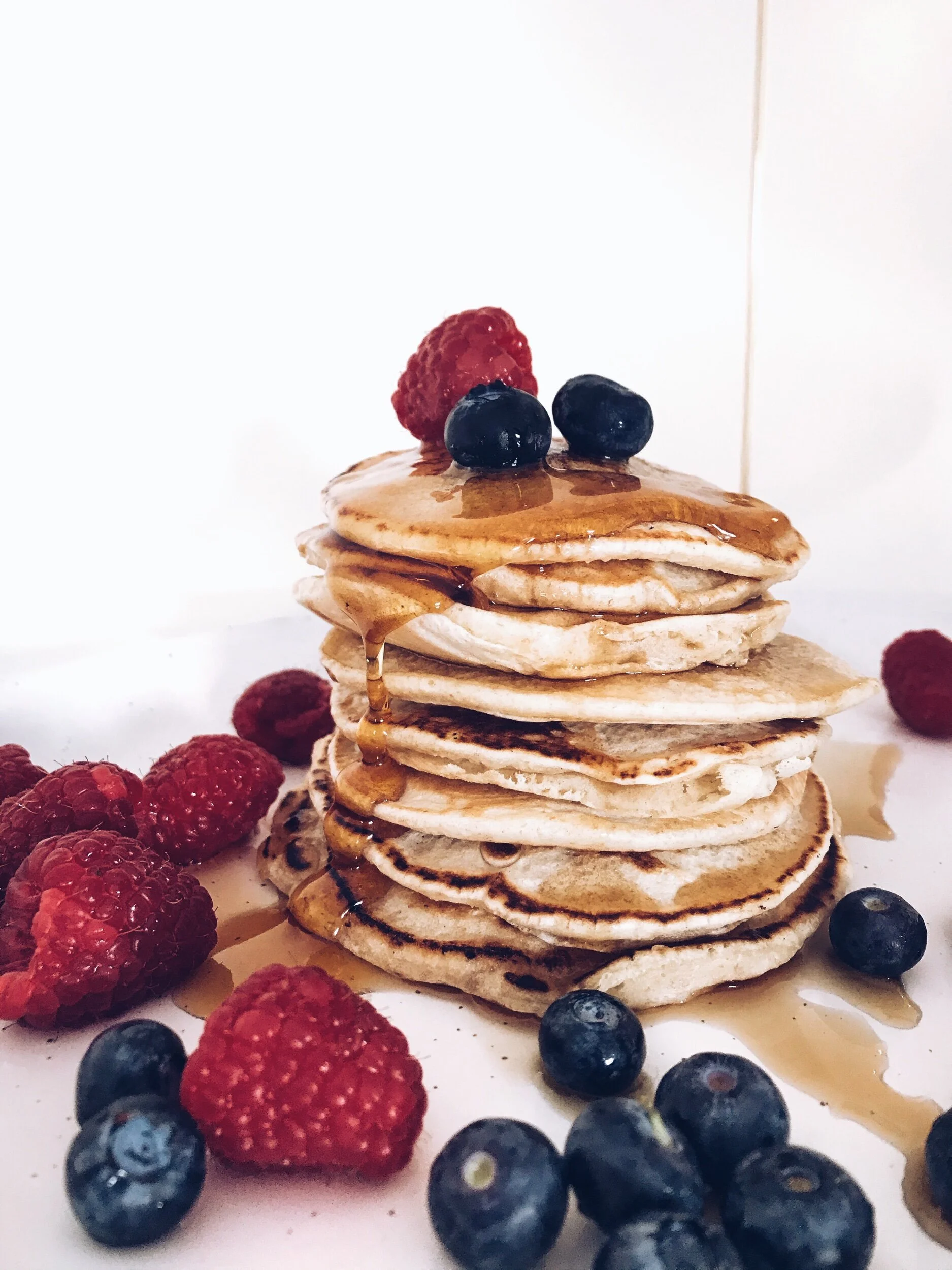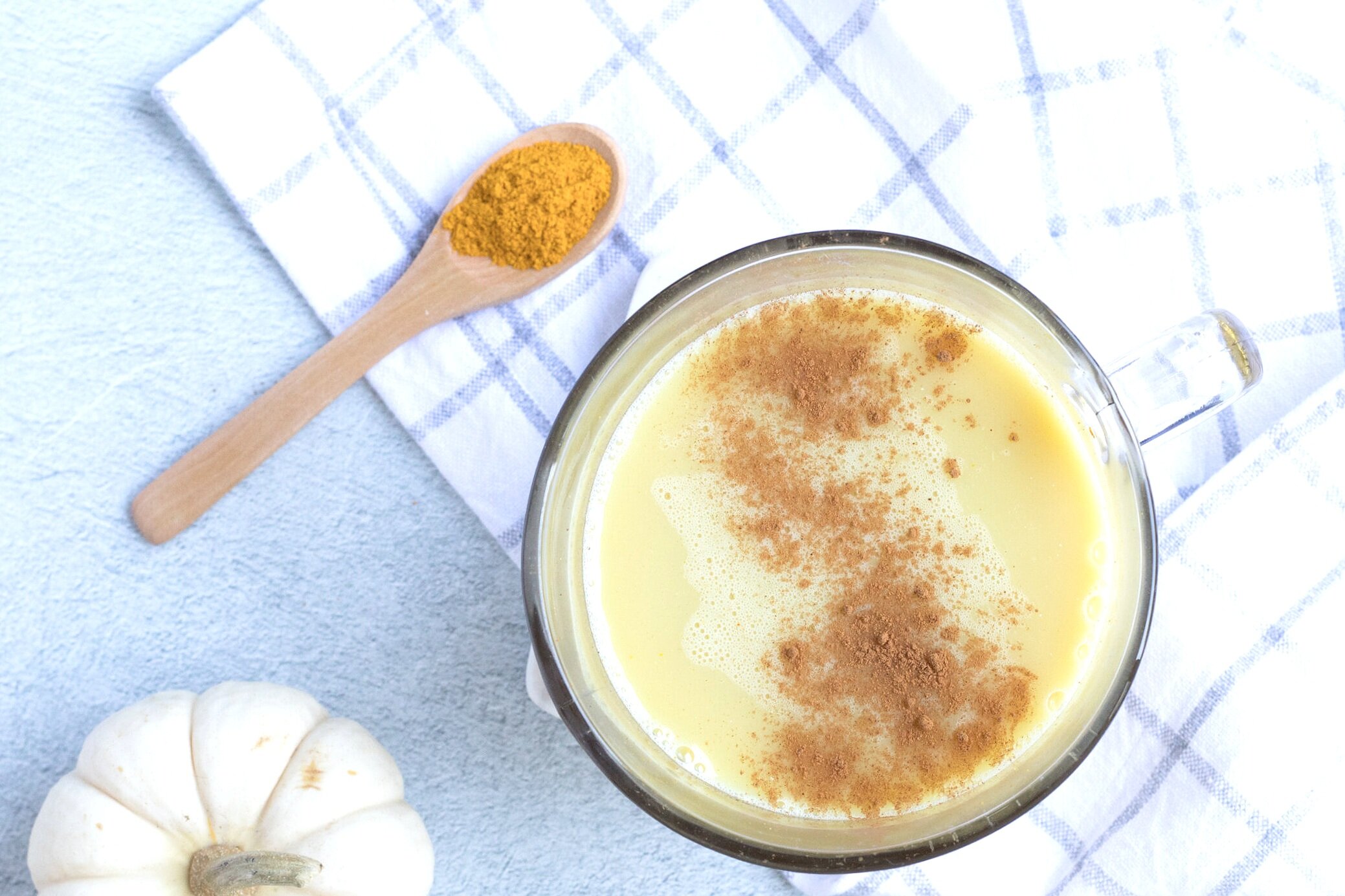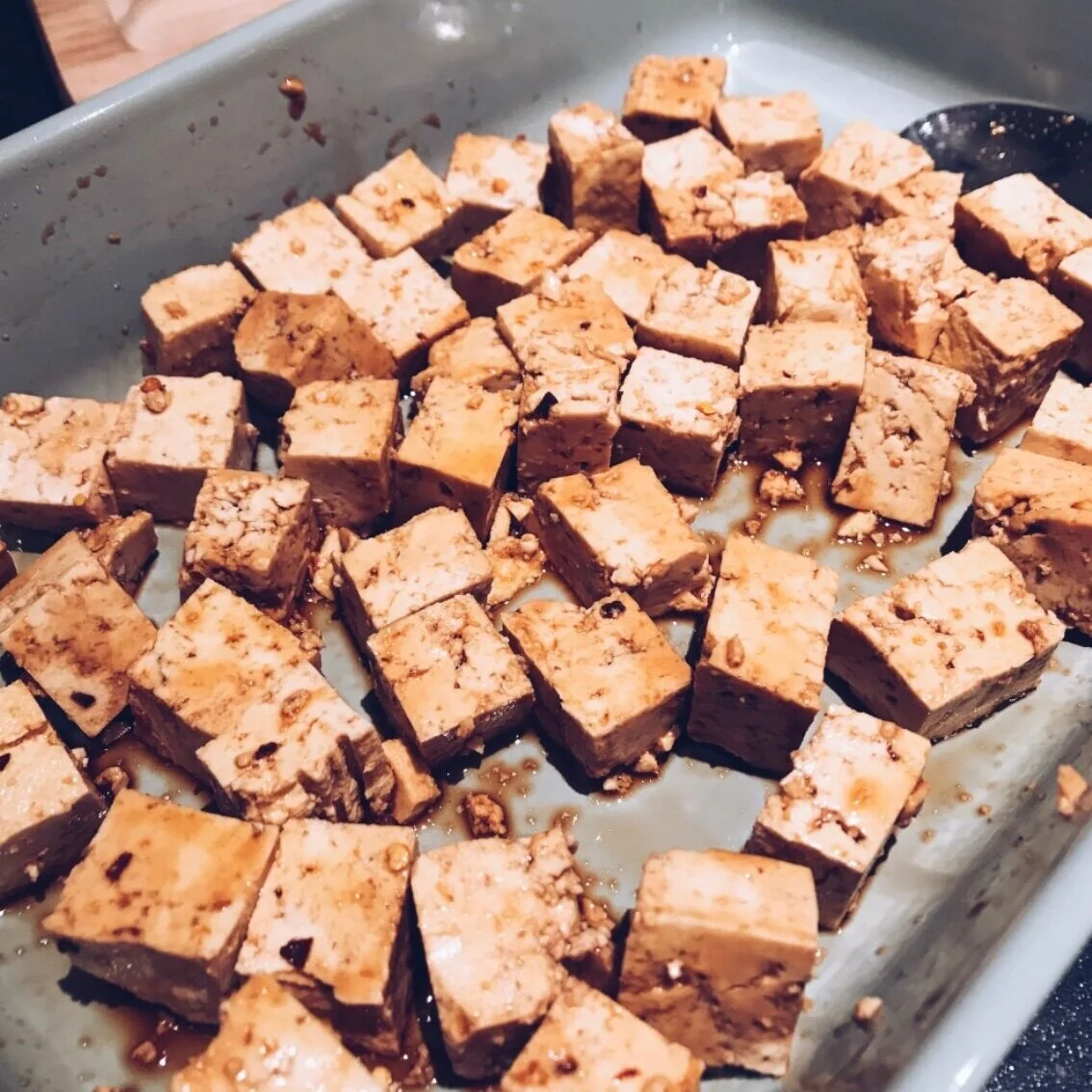
Miso Mushroom Noodle Soup
Making broths is something I’ve become to love in 2020, especially as we moved into the colder months. And adding miso is an absolute no-brainer. For those that don’t know, miso is a Japanese paste produced by fermenting soybeans with a mould called koji.
Making broths is something I’ve become to love in 2020, especially as we moved into the colder months. And adding miso is an absolute no-brainer. For those that don’t know, miso is a Japanese paste produced by fermenting soybeans with a mould called koji. It is rich in essential nutrients including B vitamins, vitamin K, E and folic acid. Not only that but miso has prebiotic properties (it is amazing at keeping gut bacteria happy) because of the fermentation process and it also contains probiotics, which repopulate the gut with beneficial bacteria. I add it to broths, creamy pasta sauces or mix with soy and lime for stir fries.
Image credit - triedandtruerecipe.com
Ingredients
Broth
30g dried porcini mushrooms
3 tbsp miso paste (I use organic Yutaka)
1 litre water
2-3 tbsp tamari soy/soy sauce (I use Yutaka)
4 cloves garlic finely diced
1 tbsp fresh ginger finely diced
Add in
400g wild mushrooms (try to include shiitake and oyster but chestnut are good if you can’t find)
120g baby spinach
4 tbsp of chopped spring onions
2 handfuls of coriander (I love it so I use loads)
2 tsp fresh chilli (depending on how spicy you like)
400g soba noodles (can use any noodles but I like soba)
Recipe
Place the dried porcini mushrooms in a bowl and cover with hot/boiling water. Allow it to sit for 10-30 minutes. Strain into a saucepan and reserve the mushrooms for another recipe or to add back into your noodle bowl when serving.
Bring the mushroom broth to a gentle simmer and stir in the wild mushrooms, garlic and ginger. Remove from heat.
In a separate bowl whisk together the miso paste with a couple of spoonfuls of the hot broth. Once incorporated add it to the pot with the soup together with the tamari/soy.
Meanwhile cook the soba noodles in a separate pot until al dente - around 4 minutes. (Do not cook them in the mushroom broth as they contain lots of starches that will cloud the broth and throw off the flavour).
Divide the noodles between 4 bowls and top each with some of the baby spinach. Ladle the mushroom soup with the mushrooms on top and garnish with the coriander, spring onions and chili to taste. Serve hot.
Sweet Potato and Ginger Soup
Spicy, sweet, creamy, zingy, this bright orange soup fuels you with plenty of beta-carotene, antioxidants, anti-fungal and anti-viral compounds from ingredients such as sweet potato, carrots, ginger, garlic, chilli and turmeric. To give it that extra immune boost, I added a spoon of probiotic yogurt to support the gut along with pumpkin seeds for crunch and zinc.
Hey guys,
Spicy, sweet, creamy, zingy, this bright orange soup fuels you with plenty of beta-carotene, antioxidants, anti-fungal and anti-viral compounds from ingredients such as sweet potato, carrots, ginger, garlic, chilli and turmeric. To give it that extra immune boost, I added a spoon of probiotic yogurt to support the gut along with pumpkin seeds for crunch and zinc.
Feeds 4 - 30 minutes
Ingredients
2 tbsp olive oil
2 diced red onions
4 inch root ginger (2 tbsp chopped)
6 cloves garlic
1 chilli
1 tbsp fresh turmeric/powder also fine
3 large sweet potatoes chopped
8 carrots sliced thinly
Vegetable stock
Bunch of coriander
4 tbsp natural probiotic yogurt
2 tbsp pumpkin seeds
salt and black pepper
Recipe
Put large saucepan on medium heat with 2 tbsp of olive oil.
Remove skin and dice red onions. Add these to the pan with some salt and pepper.
Discard skin from ginger with the back of a spoon, chop head and tail off chilli and smash garlic to remove its skin. Chop these finely.
Remove skin from turmeric root and grate. Add more cracked black pepper.
After a few minutes, add these ingredients in with the onions and stir.
Chop carrots into 3cm wide wheels and sweet potato into 1 inch chunks, leaving skin on both but discarding the ends.
Add these to pan and stir for 1 minute.
Add vegetable stock slowly until the water just covers ingredients. Bring to boil and then reduce heat to simmer for 15 minutes until carrots and sweet potato are soft (use a knife to check).
Roughly chop the coriander and add half of this to the mix.
Pour contents into a blender and whizz it until it is smooth.
Pour into bowls. Add 1 tbsp of yogurt to each bowl. Sprinkle a few pumpkin seeds and garnish with remaining coriander.
Banana Choc Chip Muffins
So easy, so quick, vegan and delicious. Beware, they are moreish and it’s not uncommon to inhale the lot in a day…
This recipe makes 10-12 muffins.
So easy, so quick, vegan and delicious. Beware, they are moreish and it’s not uncommon to inhale the lot in a day…
This recipe makes 10-12 muffins.
ingredients
Wet:
3 overripe bananas
1 tsp vanilla extract
3 tbsp melted coconut oil (melt in microwave or on hob)
&
2 tsp of apple cider vinegar (not essential but makes them extra fluffy)
* up to 3 tbsp of plant milk - I used oat - to make it a more liquid consistency
Dry:
2 tsp baking powder
1/4 tsp salt
60g sugar (I use coconut for taste)
220g flour of choice
50g chocolate chips/chunks
Method
Set oven at 170c.
Smash bananas and add all wet ingredients to one bowl. Mix all dry ingredients in separate bowl.
Add all wet into dry, add chocolate chips (or cut up chunks). Add milk to bind it and bring it to a sticky consistency.
I used a silicone cupcake tray and greased with the smallest bit of coconut oil around each one. If in doubt, use cases.
Divide mix between moulds. Add extra choc chips on top to look 👌🏼
Bake for 20 minutes.
Remove from oven and let cool for 5 minutes, remove one and eat immediately whilst still warm (mandatory).
——————————
They will keep in the fridge for a week or an airtight container for 3-4 days (place paper towel in container to absorb moisture).
Enjoy xx
One Surprising Ingredient for Immunity
Although we are likely all hunkering down with wine and canned goods during this health crisis, it’s integral that we are getting foods into our diet that are specifically beneficial for the immune system… just in case. Whilst studying nutrition and specifically the immune system, there was one ingredient I found surprising to boost immunity. Yes most of us know garlic, lemon, ginger are pretty impressive when we aren’t well… but this one was new to me.
Although we are likely all hunkering down with wine and canned goods during this health crisis, it’s integral that we are getting foods into our diet that are specifically beneficial for the immune system… just in case. Whilst studying nutrition and specifically the immune system, there was one ingredient I found surprising to boost immunity. Yes most of us know garlic, lemon, ginger are pretty impressive when we aren’t well… but this one was new to me.
Mushrooms, specifically shiitake, oyster and reishi are POWERHOUSES! They contain vitamin D, some fibre, protein and also these things called polysaccharides. I won’t go into too much detail here but when these compounds pass through the digestive system, they trigger an immune response and tonnes of white blood cells flow through the body scouting out and destroying anything dangerous (viruses, bacteria, foreign bodies). MAGIC!
So, if you can find mushrooms anywhere at the moment…dried, fresh, shiitake, reishi, oyster, even chestnut and button… buy them! Below are three recipes that I would whooollly recommend…
If you are a wee health nut like me and want to understand more about the biological processes - scroll to the bottom and see a part of my latest assignment about them.
I will be adding a different health hack onto my blog every few days and giving you some recipes, so if you subscribe you will get notified when these are published.
Take care xx
Along with a handful of other fungi, shiitake mushrooms are powerhouses for the immune system. They contain Vitamin D, some fiber and protein and also contain glucose polysaccharides (Mercola, 2019).
They contain a chemical compound called polysaccharide lentinan and according to a large body of literature, these act as an immune modulator. Polysaccharides are large molecules made up of lots of chains of sugar and lentinan is a beta glucan polysaccharide. Although beta glucans go straight through the digestive tract and come out in the stool, they still stimulate a chain reaction at a certain place in the gut. Whilst in the gut, the immune cells recognise beta glucan as a foreign body and thinking it’s under attack, it stimulates the immune system to respond in a number of ways.
Kawata et al (2015) suggested that beta glucan polysaccharides in shiitake mushrooms were able to stimulate and activate macrophages, an essential cell in our immune system, spending their time in phagocytosis, engulfing waste and pathogens. When they make contact with a foreign body, they secrete cytokines, which are small proteins that act as chemical messengers. Cytokines carry vital information and stimulate cells to get to a site of injury and get to work. These specific cytokines are integral to the efficacy of the immune system.
Another way our body is stimulated to respond to mushrooms is with the help of an area in the digestive system called Peyer’s patches. Peyer’s patches is a grouping of tissue in the lower part of the intestine called gut associated lymphoid tissue (GALT). They form a very important part of the immune system and act as a surveillance system, monitoring foreign particles that pass through and relaying this information via chemical messengers back to the immune system to determine what is good or bad. It communicates with the flora in your gut and together they decide the bacteria’s fate, destroying or activating them. We want beneficial bacteria in our gut but not pathogenic antigens that cause harm. Peyer’s patches plays an integral role here and work symbiotically with the body to stimulate this immune response. They encourage the production of pathogen-specific antibodies and move them through the lymph system to hunt out pathogens (Guggenheim, 2014).
Shiitake mushrooms also contain vitamin D, which helps to protect the innate and adaptive immune systems. Your innate immune system is made up of white blood cells such as neutrophils and macrophages as well as dendric cells, natural killer cells and a few more. You are born with your innate immune system and these cells act naturally and quickly in response to an injury or infection. The adaptive immune system is antibody mediated and it kicks into action when the innate system fails. At first it is slower but is more specialised, so it can tailor itself to the various pathogens it encounters, learning the correct way to respond in the future. It is made up of lymphocytes, B and T cells, antibodies as well as microflora in the digestive system. Research indicates that Vitamin D has the ability to regulate T helper cells, helping the body determine what is an outside invader and what is self.
Although the research is recent, there is a strong correlation between Vitamin D deficiency and autoimmune responses. Autoimmune diseases stem from the body confusing external pathogens with self. T-helper cells help with cytokine production including interleukin-2, a cytokine-signaling molecule that assists with the activation of T-regulatory cells and cytotoxic T cells. Research has found that Vitamin D helps to balance out T-helper cell 1 (Th1) and T-helper cell 2 (Th2). Although this is a somewhat generalised understanding; the former tends to promote pro-inflammatory responses to intracellular viruses and is linked to autoimmunity, whilst the latter is linked more so with allergic immune responses and stimulates the production of antibodies to fight extracellular parasites. Autoimmune diseases such as rheumatoid arthritis, multiple sclerosis and Crohn’s disease are linked with dominance in Th1, whilst diseases such as lupus, athsma and ulcerative colitis have links with Th2 dominance (van Eden, 2002). A balance between both is important and vitamin D helps with this by promoting T-helper cells, essentially making your adaptive immune system smarter.
Whilst it’s known that we absorb Vitamin D from exposure to sunlight, unfortunately we tend not to spend as much time outside as we should and when we do, we wear sun protection inhibiting the amount we can absorb. Obtaining Vitamin D through dietary sources is highly recommended and mushrooms (especially when left out in the sunlight before consumption) can deliver substantial amounts (Cardwell, 2018).
As mentioned earlier, Vitamin D encourages the activation of cytotoxic T cells. These are more aggressive than T-helper lymphocytes and can destroy problematic cells that might be cancerous. They need help from interleukin-2 to activate, so a sufficient amount of T-helper cells need to be secreted in order for the cytotoxic cells to become cytolitic (cell destroyers) (Aranow, 2012). Efficient production and activation of all T cells is integral to promote immunity.
Fluffy Pancakes
Happy pancake day yaallll. These are some yummy vegan pancakes 🥞 Enjoy!
Ingredients
135g self raising flour (plain is fine)
1 heaped tsp baking powder
1/2 tsp salt
2 tbsp coconut sugar (caster is fine)
130ml plant milk
1 egg or 1 flax egg (explained below)
Butter or coconut oil to cook
Method
At first, make your flax egg (method here) and leave to one side to thicken.
Melt on a medium heat 2 tbsp of coconut oil - in the pan that you will use to fry the pancakes.
Add all dry ingredients into a bowl and mix.
Pour milk, (flax) egg and melted coconut oil from pan into the dry ingredients. Mix this either with an electric whisk (I don’t have the patience to whisk it myself but you’re welcome to!) or (I) use a nutribullet until it is thick and smooth.
Heat up the pan with the residue coconut oil and pour mixture in to form small circles for the pancakes. They will bubble after a couple of minutes, which is when you flip them and fry for just one minute on the opposite side. You’ll find your own way of doing this and after a couple, you’ll know your timings.
Fry fry fry and cover with maple syrup and fruits!
How to Make a Flax Egg
Flaxseed, otherwise known as linseed, is a great source of healthy plant-based omega-3 fatty acids, as well as magnesium and fibre. I discovered flax eggs when I ended up mixing ingredients for a cake and realised I had no eggs… flaxseed to the rescue.
Flaxseed, otherwise known as linseed, is a great source of healthy plant-based omega-3 fatty acids, as well as magnesium and fibre. I discovered flax eggs when I ended up mixing ingredients for a cake and realised I had no eggs… flaxseed to the rescue.
It’s super simple and comes in handy when you’re thinking about cutting down animal products.
Ingredients + Method for 1 flax egg
1 tbsp flaxseed
2.5 tbsp water
Mix these together and leave for 5 minutes whilst it thickens slightly. Although this is not exact, 1 egg equals 1 of these flax eggs.
This tends to work well for these pancakes and for cupcakes. Enjoy.
Golden Mylk Recipe
This turmeric latte recipe is delicious as your morning drink (perhaps instead of coffee) or an afternoon sweet pick me up.
This turmeric latte recipe is delicious as your morning drink (perhaps instead of coffee) or an afternoon sweet pick me up.
The recipe is for the paste. You make this in ‘bulk’, keep it in the fridge (for up to 3 weeks) and then use 1 tsp every time you want a cup. You can also double/triple up the recipe if you know you’ll want a few.
Turmeric has really great anti inflammatory effects mostly from its main active ingredient, curcumin. You don’t need to know a million things about it, apart from that it’s super good for you and this drink will draw out any nasty colds/flu that you might be harbouring.
Ingredients
For initial paste
1 tbsp turmeric
1/2 tbsp ground cinnamon
1/2 tbsp ground ginger
pinch of ground black pepper (activates the curcumin in turmeric so make sure you put it in)
1 tbsp coconut oil (also essential to make all goodies bioavailable)
3 tbsp (45ml) of water
For one cup
250ml (ish) coconut milk (I measure this amount by filling my mug up with milk first to how much I’d like and then pouring it into the pan)
1/2 tsp honey/maple syrup
Method
To make paste
Put coconut oil into small pan and melt on medium heat
Add all ground spices and mix them up with spoon
Add water and continue to mix on medium - high heat until it forms a paste
This paste can then be put into a ramekin/Tupperware (although it will stain Tupperware) and kept in the fridge for 3/4 weeks to make around 5 turmeric lattes.
To make one cup
Take one big teaspoon of paste into small pan on medium heat
Add coconut milk (my preferred milk but oat and almond are also yummy)
Stir until milk is warm, steaming and the paste has melted so the mixture has all turned yellow
Taste and if you’d like to, add sweetener of honey or maple syrup. You have to judge the amount for yourself - about 1/2 tsp is right for me but you can add more or less
Note: if you are using sweetened coconut milk that you may not need the sweetener, so definitely taste it before adding. You can use different plant milks instead but note that they will taste different/more sweet/less sweet.
If you like this, you may also like my chai latte recipe.
Let me know when you make it!
Love Kiri xx
How to Fall in Love with Tofu
Tofu, my kitchen staple, seems to be the ingredient I get most comments about; how to cook it, that I make it look delish *thanks*, that it looks weird… and that it doesn’t taste like chicken (funnily enough). So guys, let’s move past the myths and your preconceptions about the squishy white block and allow you to fall in love.
Tofu, my kitchen staple, seems to be the ingredient I get most comments about; how to cook it, that I make it look delish *thanks*, that it looks weird… and that it doesn’t taste like chicken (funnily enough). So guys, let’s move past the myths and your preconceptions about the squishy white block and bring you into the know…
Before I give you my easy breezy recipe, I want to clarify the ins and outs. So, tofu is a natural form of protein with ALL NINE essential amino acids, higher values of calcium, magnesium, iron, zinc and folate than chicken. Essentially it is soy bean curd, so imagine it made in the same way as cheese but with no cows involved - FAR better for the environment, great option to add into your diet, no moo’s hurt 😉. Also, try to avoid comparing the texture or taste to meat, because it… isn’t.
There are different forms of tofu: Silken or firm bring the most popular. This is down to you to choose the texture you like. Silken is a little more fragile and melts in the mouth, firm gives more of a bite and I tend to buy this more. Silken does not need pressing but firm tofu does. To make tofu firmer, you need to squeeze out some water (pressing) so I do this by taking kitchen paper towel (6-8 sheets), I then wrap these around the block, pop it on a plate and press down and into the sides gently with my hands til the paper towels are soaked. I would highly recommend getting organic - I like Cauldron or Tofoo firm and Clearspring silken.
Here are three different ways I cook tofu; fried maple, chilli paprika for salads/snack or sweet soy ginger with veggies, rice or rice noodles. I also tend to make a batch at the start of the week (usually maple) and then it’s quick and easy to put into lunches or snack on. These can be made with firm or silken.
Ingredients for:
Maple Tofu
1 block natural tofu
2-3 tbsp maple syrup
s + p to taste
1 tbsp coconut oil to fry
Chilli Paprika
1 block natural tofu
1/2 tbsp paprika
1/2 tsp chilli flakes (or how spicy you want)
1.5 tbsp coconut oil to fry
s + p to taste
Lazy method for these two
Chop the tofu into 2cm cubes with a sharp knife OR slice it into slabs for quicker cooking. Add coconut oil to frying pan, melt at medium-high heat. Add tofu, letting coconut oil cover most pieces. Fry for 4-5 mins on one side then flip each piece (bit monotonous if in cubes). Once fried for ~10 minutes, reduce heat to low, add other ingredients into the pan and coat each piece. Fry for additional 2-3 minutes. Voila.
Sweet Soy Ginger
1 block natural tofu
2 tbsp soy sauce
1 tsp chopped garlic
2 tsp chopped ginger
1 tbsp maple syrup
1/2 lime squeezed
pinch chilli flakes
pinch s + p
1 tbsp coconut oil
Method
- Chop the tofu into 2cm cubes with a sharp knife, put in a bowl and marinade with all the goods - soy sauce, garlic, ginger, maple syrup, lime, chilli flakes, s + p. If you have the time, leave the marinade coated on for around 30 minutes or more.
- Add coconut oil to frying pan and keep it on medium heat. Add tofu and let one side brown for 4-5 mins before flipping… make sure another side also browns for the same amount of time (don’t worry about getting each side on the heat, just a couple is good to get a crunch).
It should take 10 minutes in total. Pop this then into stir fries, rice, veg (with more soy and syrup). DREAM.
Ps. To be a little more lazy, you can get flavoured tofu such as the Oriental or Smoked tofoo - Enjoy.
K x




